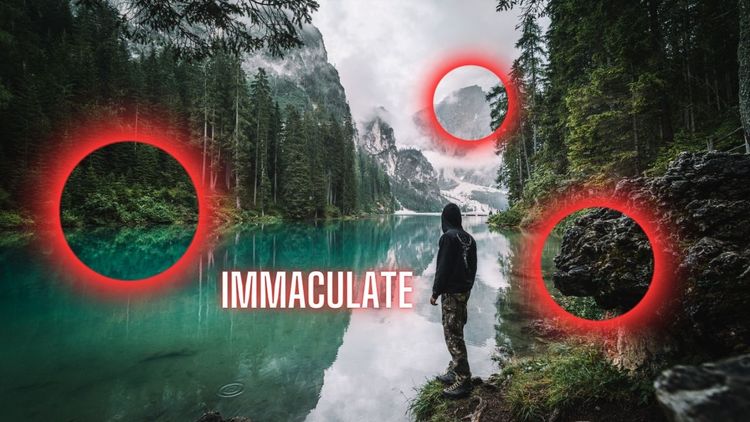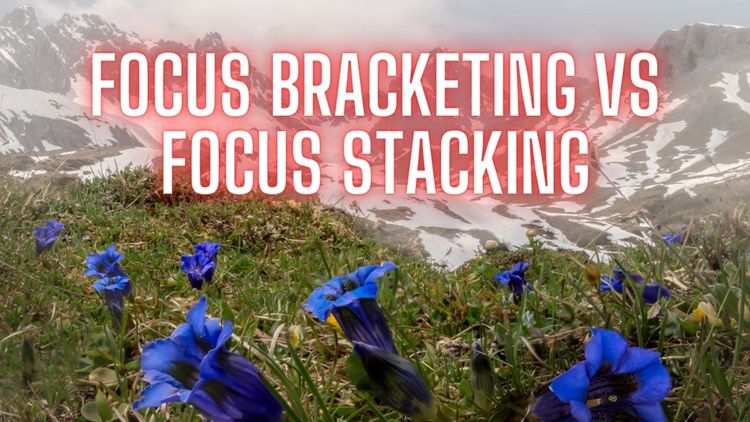How to Make Your DJI Gimbal Vertical: Hacks For Shooting Vertical Videos

Shooting vertical videos has become mainstream, thanks to the popularity of social media platforms like TikTok, Instagram, YouTube, and Snapchat.
Vertical videos are more convenient to watch on smartphones, and they offer a unique perspective that horizontal videos cannot match.
If you own a DJI gimbal, you can easily shoot vertical videos by switching to vertical mode - but what if your gimbal stabilizer does not have portrait mode built-in?
In this article, we will guide you on how to make your DJI gimbal vertical video ready and provide tips and tricks for shooting vertical videos.
Check out this article about the best gimbals for vertical video creation!
Check if your DJI gimbal has the portrait mode feature
The first step to shooting vertical videos with your DJI gimbal is to check if it has the portrait mode feature.
Most DJI gimbals, including the DJI RS3, DJI RS 3, DJI Ronin, Ronin SC, and Mini gimbal, have the portrait mode feature.
The portrait mode allows you to shoot vertically by automatically adjusting the gimbal's position and camera orientation.
To enable portrait mode, go to your gimbal's settings, and select the portrait mode option.

Solution #1: Using An L-Bracket Or DJI R Vertical Mount Accessory To Shoot Vertically
If your DJI gimbal does not have the portrait mode feature, you can still shoot vertical videos by using an L-Bracket or DJI R Vertical Mount.
An L-Bracket is a metal bracket that attaches to the bottom of your camera and allows you to rotate it 90 degrees.
You can then attach your camera to the gimbal and shoot vertically. DJI R Vertical Mount is a dedicated accessory that allows you to mount your camera vertically on the gimbal.
It is compatible with the DJI RS3 gimbal and provides a convenient and secure way to shoot vertical videos.
Solution #2: Use A Camera Cage To Mount Your Camera Or Smartphone Vertically
Another option for shooting vertical videos with your DJI gimbal is to use a camera cage.
A camera cage is a rig that helps you mount your camera or smartphone in different positions, including vertically.
The camera cage is attached to the gimbal, and it provides a secure and stable platform for your camera.
With a camera cage, you can shoot videos in different orientations, including vertical, without worrying about stability issues.
One of the best things about using a camera cage is that it provides a lot of mounting options.
You can mount your camera or smartphone in different positions, depending on the shot you want to achieve.
For example, you can mount your camera on the top of the cage to get a high-angle shot or mount it on the side to get a low-angle shot.
In addition to providing mounting options, camera cages also offer protection for your camera or smartphone.
They are made of durable materials that protect your equipment from damage in case of an accidental drop or impact.
When choosing a camera cage, you should ensure that it's compatible with your gimbal and camera or smartphone. Some popular camera cage brands that are compatible with DJI gimbals include SmallRig, Tilta, and CAMVATE.
Using a camera cage to mount your camera or smartphone vertically is a convenient and practical option for shooting vertical videos.
It offers a secure and stable platform for your equipment and provides various mounting options to achieve the perfect shot.
If you're interested in using a camera cage, make sure to choose one that's compatible with your equipment and meets your shooting needs.

16 Hacks For Shooting Vertical Videos With DJI (Only Few People Know Of)
Now that you know how to make your DJI gimbal vertical, here are some tips and tricks for shooting vertical videos:
Balance the DJI gimbal: Before shooting, make sure your gimbal is balanced correctly. A balanced gimbal will provide smooth and stable footage.
Use the horizontal and vertical mode: Some DJI gimbals like the DJI RS3 Pro gimbal have a horizontal and vertical mode that allows you to switch between horizontal and vertical shooting modes effortlessly. (eliminating the need for an l-bracket, vertical mount, or camera cage)
Use the FPV mode: The FPV mode is a new feature found in some DJI gimbals like the DJI RS 3 gimbal.
The FPV mode allows you to tilt your camera all the way up or down and provides a dynamic perspective for your videos and more options for camera movements.
Use the RS stabilization algorithm: The RS stabilization algorithm is a feature found in some DJI gimbals that provides superior stabilization for your footage.
It uses advanced algorithms to stabilize your footage and reduce shaky footage.
Use a camera control cable: Some DJI gimbals like the DJI RS3 gimbal come with a camera control cable that allows you to control your camera's settings directly from the gimbal.
Use an accessory like the battery grip: The battery grip is an accessory that provides additional power to your gimbal and extends your shooting time.
Use the zoom: Utilizing the zoom function can be an excellent way to monitor and enhance your footage and add more dynamic shots to your videos.
Zooming in and out of the subject can create a sense of depth and add an extra dimension to your video.
Integrate external audio: While the built-in microphone on your camera may be sufficient for some situations, using external audio can drastically improve the sound quality of your videos.
You can use a wireless microphone or a shotgun mic to capture high-quality audio and make your videos more professional and mount it on your camera cage before you have your gimbal balanced.
Record button: Most DJI gimbals come with a record button, which allows you to start and stop recording without having to touch your camera.
This can be especially helpful when shooting in awkward positions or when you need to stay perfectly still.
Shooting experience: Shooting with a DJI gimbal can be an incredibly smooth and effortless experience.
The gimbal's three axes stabilize your camera and eliminate any unwanted movements, allowing you to focus on your shots and not worry about shaky footage.

Canon and Sony Cameras: DJI gimbals are compatible with a range of cameras, including popular models from Canon and Sony.
The Sony a7s III, for example, works seamlessly with DJI gimbals and offers advanced features such as high ISO and dynamic range.
Platform: The DJI platform offers an intuitive and user-friendly interface, making it easy for anyone to operate a gimbal, regardless of their experience level.
Vertically: With the ability to shoot vertically, DJI gimbals are perfect for capturing footage for social media platforms such as Instagram, YouTube, and TikTok.
Focal length, ISO, and aperture: Depending on the type of footage you want to capture, adjusting the focal length, ISO, and aperture can have a significant impact on the final result.
2.5 hours of battery life: Most DJI gimbals come with a battery that provides up to 2.5 hours of shooting time.
This is more than enough for most shooting scenarios, but you can also use an accessory like the battery grip to extend your shooting time even further.
Transmit footage: Many DJI gimbals also allow you to transmit footage directly to your mobile device or computer, allowing you to review your shots on the go and make adjustments as needed with Bluetooth pairing.

How To Turn Your DJI Camera Stabilizer Vertical FAQs:
Can I shoot vertically with my DJI gimbal?
Yes, most DJI gimbals have a portrait mode feature that allows you to shoot vertically.
What is the best way to balance my DJI gimbal?
The best way to balance your DJI gimbal is to follow the manufacturer's instructions and use a balancing stand if necessary.
Can I mount my smartphone on a DJI gimbal?
Yes, most DJI gimbals come with a smartphone mount or offer one as an accessory.
How long does the battery on a DJI gimbal last?
Most DJI gimbals come with a battery that provides up to 2.5 hours of shooting time.
Can I use an external microphone with my DJI gimbal?
Yes, you can use an external microphone with most DJI gimbals to improve the sound quality of your footage.
Is it necessary to use a camera cage with my DJI gimbal?
While it's not necessary, using a camera cage can provide additional support and stability to your camera and make it easier to mount it vertically.

Can I control my camera settings from my DJI gimbal?
Yes, most DJI gimbals allow you to control your camera settings from the gimbal itself.
This is achieved through the use of a camera control cable that connects your camera to the gimbal.
With this cable, you can adjust settings such as ISO, aperture, shutter speed, and focus directly from the gimbal, allowing you to make quick and easy adjustments without having to touch your camera.
Additionally, some gimbals come equipped with a full-color touchscreen that provides an even more convenient way to control your camera settings.
With this feature, you can make adjustments using a series of on-screen menus and sliders, providing you with a more intuitive control experience.
Can I use my DJI gimbal for low-angle shots?
Yes, most DJI gimbals allow you to shoot from low angles by tilting the gimbal handle down.
This is especially useful when shooting subjects that are close to the ground or when you want to capture a unique perspective.
Some gimbals even feature a low-angle mode that makes it easier to achieve these shots.
Can I shoot high and low angles with my DJI gimbal?
Yes, most DJI gimbals allow you to switch between horizontal and vertical shooting modes, which means you can shoot both high and low angles with ease.
This is especially useful when shooting in scenarios where you need to capture footage from different angles.

Effortlessly Make Your DJI Shoot Vertical Videos Even Without Portrait Operation Modes - Conclusion
A DJI gimbal is an essential tool for any filmmaker or videographer who wants to capture smooth and stable footage.
With features such as three axes stabilization, the RS stabilization algorithm, and intuitive operation modes, DJI gimbals provide an unparalleled level of control and convenience when it comes to shooting video.
If you want to shoot vertically with your DJI gimbal, there are several solutions available to you, including using an L-Bracket or DJI R Vertical Mount, using a camera cage to mount your camera or smartphone vertically, or simply shooting in portrait mode if your gimbal supports it.
No matter which method you choose, be sure to take the time to properly balance your gimbal and familiarize yourself with its various features and modes.
With a little practice, you'll be able to effortlessly capture stunning footage in both horizontal and vertical orientations.
Click here to discover the best gimbals for vertical video creation!
Your friend,
Ben
Click your way to the best gimbal for vertical video creation down below:







